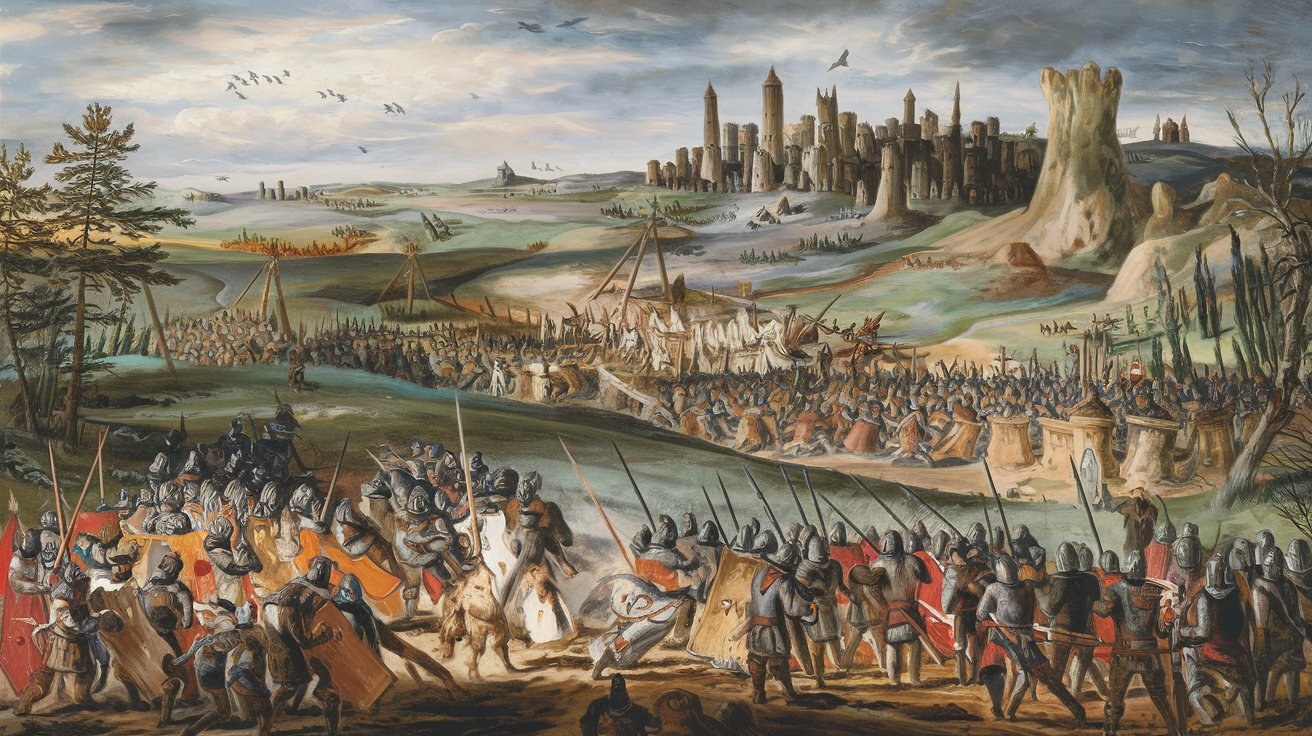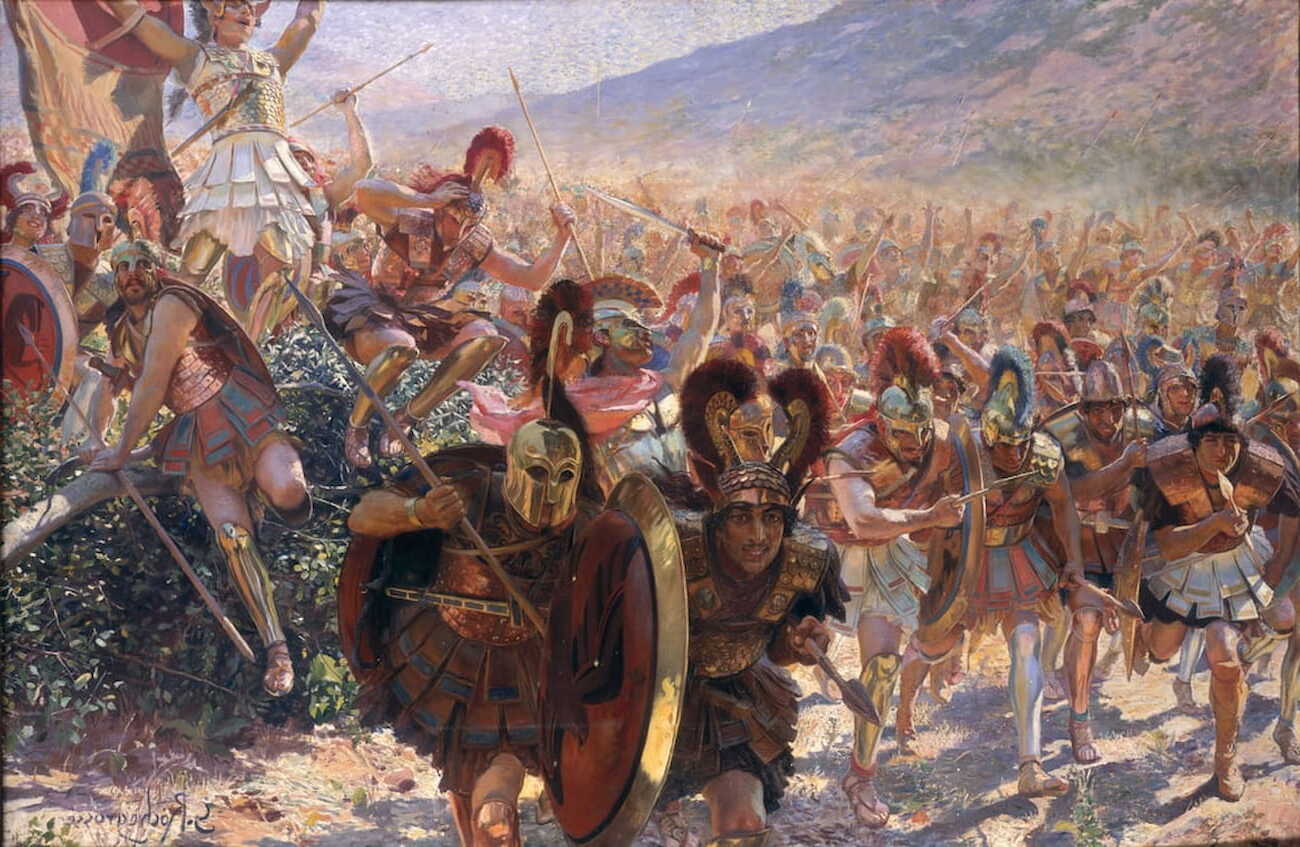
Shamash-shum-ukin's Civil War was a dramatic and pivotal conflict in ancient Mesopotamia, pitting two royal brothers against each other. Shamash-shum-ukin, the crown prince of Babylon, sought independence from his brother Ashurbanipal, the powerful king of Assyria. This war, lasting from 652 to 648 BC, was fueled by political ambitions, cultural tensions, and deep-seated familial resentment. Shamash-shum-ukin rallied support from various groups, including the Chaldeans, Arameans, and Elamites, while Ashurbanipal responded with a brutal siege of Babylon. The war's outcome reshaped the region's power dynamics, leaving a lasting impact on Mesopotamian history. Here are 25 key facts about this significant historical event.
Key Takeaways:
- Brotherly rivalry turned into a dramatic civil war as Shamash-shum-ukin rebelled against his brother, Ashurbanipal, seeking independence for Babylon. The war shaped Mesopotamia's future and led to a tragic end for Shamash-shum-ukin.
- Shamash-shum-ukin's rebellion was marked by shifting alliances, betrayals, and a decisive Assyrian victory. The conflict had a profound impact on Mesopotamian history, shaping the balance of power and cultural development.
The Brothers at War
The civil war between Shamash-shum-ukin and Ashurbanipal was a dramatic clash that pitted brother against brother. This conflict, which lasted from 652 to 648 BC, was not just a family feud but a battle that shaped the future of Mesopotamia.
-
Brotherly Conflict: Shamash-shum-ukin, the crown prince of Babylon, and Ashurbanipal, the last great king of Assyria, were brothers. Their rivalry escalated into a full-blown civil war.
-
Shamash-shum-ukin’s Aspirations: Shamash-shum-ukin wanted to rule Babylon independently, free from his brother's control. His desire for autonomy led him to revolt against Ashurbanipal.
The Roots of Resentment
Understanding the background of the conflict helps explain why Shamash-shum-ukin felt compelled to rebel. The tension between the brothers was rooted in political and personal grievances.
-
Background and Resentment: Appointed king of Babylon by Ashurbanipal, Shamash-shum-ukin resented his brother's dominance and the overarching Assyrian control over Babylon.
-
Initial Support: Shamash-shum-ukin successfully rallied many Babylonians and southern Mesopotamian tribes to his cause, urging them to join his revolt.
Alliances and Betrayals
Shamash-shum-ukin's rebellion was bolstered by alliances with various groups. However, the war was also marked by betrayals and shifting loyalties.
-
Alliances and Coalitions: He formed crucial alliances with the Chaldeans, Arameans, and Elamites to challenge Assyrian control.
-
Elamite Involvement: The Elamites, traditional enemies of the Assyrians, supported Shamash-shum-ukin. Their king, Ummanigash, sent an army under Undashe to aid him.
-
Egyptian Involvement: Speculation exists about Egypt's involvement, with Meluhha possibly referring to Egypt. However, this support is not definitively documented.
-
Double Agents and Betrayals: The war was complicated by double agents and betrayals. Nabu-bel-shumati, a governor in Babylonia, repeatedly switched sides, causing disruptions.
Ashurbanipal’s Response
Ashurbanipal's reaction to his brother's rebellion was swift and strategic. He aimed to undermine Shamash-shum-ukin's legitimacy and rally support for his own rule.
-
Ashurbanipal’s Response: Ashurbanipal emphasized his benevolence towards Babylon, claiming he provided his brother with everything necessary for kingship.
-
Assyrian Inscriptions: Inscriptions describe Shamash-shum-ukin as "the faithless brother" and "the enemy brother," undermining his legitimacy.
The War Unfolds
The conflict lasted three years, with both sides experiencing victories and defeats. The war's chaotic nature made it difficult for both brothers to maintain stable alliances.
-
War Duration: The war lasted from 652 to 648 BC, with both sides experiencing ups and downs.
-
Assyrian Siege: Ashurbanipal laid siege to Babylon, starving the city and its inhabitants, which was a decisive factor in the war's outcome.
The Fall of Shamash-shum-ukin
Shamash-shum-ukin's rebellion ultimately failed, leading to his tragic end and a campaign to erase his memory.
-
Shamash-shum-ukin’s Death: The exact circumstances of his death are unclear. Tradition holds that he committed suicide by making a pyre of his palace, treasury, and concubines.
-
Damnatio Memoriae: After his defeat, a large-scale damnatio memoriae campaign erased his images from public records.
Ashurbanipal’s Victory
Ashurbanipal's victory solidified Assyrian control over Babylon and marked the end of Babylon's attempt to gain independence.
-
Assyrian Victory: The war ended with Ashurbanipal's victory and Shamash-shum-ukin's death in 648 BC.
-
Brotherly Language: Despite calling Shamash-shum-ukin an enemy, Ashurbanipal used fraternal language to appeal to Babylonian allies, emphasizing their brotherhood.
Divine Justification
Ashurbanipal sought divine approval for his actions, invoking treaty curses and seeking guidance from the gods.
-
Treaty Curses: Ashurbanipal invoked treaty curses to justify his actions, warning Babylonians not to listen to his brother's vain words.
-
Divine Advisement: He sought divine advisement from the Sungod, using this approval to justify his actions.
Historical and Cultural Impact
The civil war had a profound impact on Mesopotamian history and culture, influencing the balance of power and the development of subsequent civilizations.
-
Assyrian Inscriptional Conventions: The conflict highlighted the complexities of Assyrian inscriptional conventions regarding foreigners and enemy kings.
-
Shamash-shum-ukin’s Identity: Ashurbanipal suppressed his brother's identity through depersonalizing language, referring to him as "no-brother" and "enemy hands."
-
Historical Significance: The civil war marked a significant turning point in Mesopotamian history, highlighting the complexities of royal relationships.
-
Archaeological Evidence: Discoveries like the bas-reliefs of Ashurbanipal II in the British Museum provide valuable insights into the conflict.
-
Literary Structure: The literary structure of the Old Testament provides context for understanding prophetic books that mention these events.
-
Cultural Impact: The war led to a significant shift in the balance of power in Mesopotamia, with Assyria emerging as the dominant force.
-
Scholarly Debate: The exact circumstances of Shamash-shum-ukin’s death and the nature of his betrayal continue to be debated among scholars.
The Aftermath of a Brotherly Battle
Shamash-shum-ukin's civil war against Ashurbanipal was a defining moment in Mesopotamian history. This conflict wasn't just about two brothers fighting; it was a struggle for power, independence, and identity. Shamash-shum-ukin's aspirations for Babylonian freedom clashed with Ashurbanipal's vision of a unified Assyrian empire. The alliances, betrayals, and battles that unfolded over three years showcased the complexities of royal relationships and the volatile nature of ancient politics.
Ashurbanipal's eventual victory and the subsequent damnatio memoriae campaign erased much of Shamash-shum-ukin's legacy, but the war's impact lingered. It reshaped the political landscape of Mesopotamia, reinforcing Assyrian dominance while highlighting the enduring desire for Babylonian autonomy. This fraternal conflict remains a testament to the intricate dynamics of power, loyalty, and ambition in ancient civilizations.
Frequently Asked Questions
Was this page helpful?
Our commitment to delivering trustworthy and engaging content is at the heart of what we do. Each fact on our site is contributed by real users like you, bringing a wealth of diverse insights and information. To ensure the highest standards of accuracy and reliability, our dedicated editors meticulously review each submission. This process guarantees that the facts we share are not only fascinating but also credible. Trust in our commitment to quality and authenticity as you explore and learn with us.


